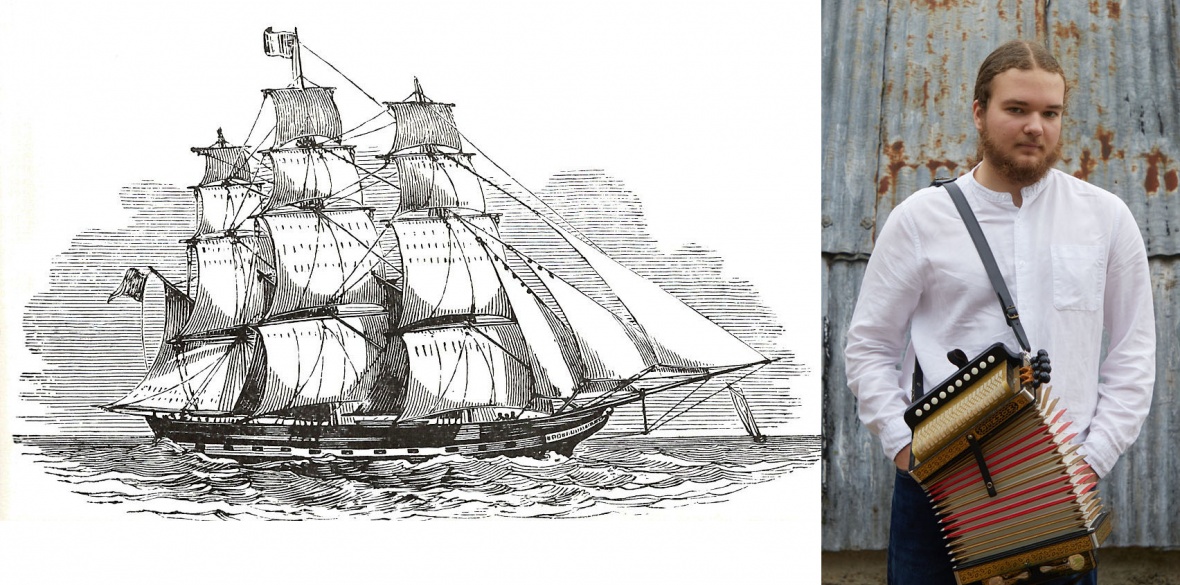This is the last article you can read this month
You can read more article this month
You can read more articles this month
Sorry your limit is up for this month
Reset on:
Please help support the Morning Star by subscribing here
SEA SHANTIES started life as a form of work song. They would be sung by crews of sailing ships, in order to aid their work.
The “shantyman” (a member of the crew hired for their singing abilities) would lead the pulsing verses, and the crew would join in with the chorus, performing various rhythmic group tasks such as hauling on ropes of heaving at bars as they did so.
Shanty expert William Doerflinger noted: “Many a hard-driving captain has hired a hand whose slight stature wasn’t in his favour, simply because he remembered him as a shantyman able to put spirit into the men and make them work cheerfully and with a will.”
Most shanties have a similar layout, revolving around a call-and-response structure.
The pace and rhythm of the songs would vary, depending on the job being performed.
A capstan shanty would be slower in pace, allowing the crew to march round the capstan, hoisting the anchor as they did so, while a bunting shanty would be livelier, as the crew worked quickly to bring in the sails to keep them safe from an approaching storm.
The uses for a shanty were plentiful, with merchant ships sailing all over the world.
Shanties were also commonplace on whaling ships, with whale oil becoming a highly prized resource during the industrial revolution.
Sea songs and ballads developed alongside these shanties. These were the leisure time equivalents of their working counterparts.
Often mistakenly referred to as shanties, these songs would help to entertain the crew during the long voyages — some of which lasted in excess of three years.
The subject matter of these songs was as varied as the men who sang them, from sweethearts and lovers on shore, to adventure stories from the past ships on which they had worked — often with a little exaggeration!
One such traditional song about the antics of a New Zealand whaling crew, The Wellerman, unexpectedly sprang to fame on the social media site TikTok, after postal worker and singer Nathan Evans shared his version of the song.
As shanty singer and expert Jim Mageean explains: “It’s not actually a shanty at all, it’s a New Zealand whaling song of unknown origin.
“Shore-whalers in New Zealand drove the whales ashore from small boats. Wellers of Sydney used to send their agents (Wellermen) to collect the whale oil and bone and pay the shore whalermen in sugar and rum.”
With the advent of propeller-driven steam ships in the latter part of the 19th century, the use of sailing ships diminished, along with the use and popularity of shanties.
There were notable exceptions to the rapid decline of sail, however, with commercial sailing ships still operational as late as 1938.
Thankfully the barbaric practice of commercial whaling is now also in decline, although its popularity lasted long enough to drive the once plentiful right whales to the brink of extinction.
The songs once sung by sailors are far from at an end, however, with a revival in popularity slowly starting to take hold.
The majority of shanties sung by folk singers and enthusiasts were saved from oblivion by Stan Hugill and other collectors, who recorded sailors singing their songs for posterity.
Is the current TikTok craze the start of something bigger, or merely a flash in the pan?
Only time will tell, but one thing is for certain — the shanties and sea songs of yesteryear still strike a chord today.
Mossy Christian is an award-winning musician, singer, dancer and educator. You can find out more about his work at www.nicksites.net/mossy












